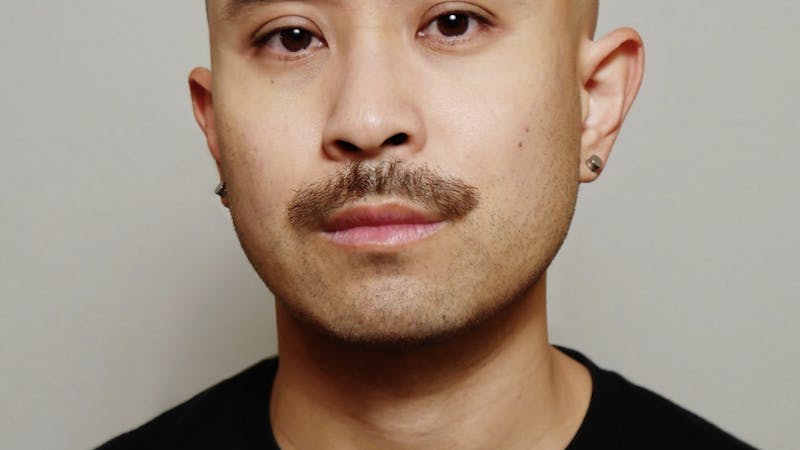Health care solution lies in prevention, cultural insight
Understanding is perhaps the most valuable skill the modern citizen can possess. We no longer live in an isolated world, but in an interconnected network. An avid learner by nature, I spent my last four years at Rice fine-tuning my understanding of people by observing how they were shaped by a phenomenon that is too often overlooked: culture. Culture shapes a person's character, behavior and personality. This is the main reason why I find Japan so fascinating. I want to understand a specific aspect of the Japanese culture - their diet.Japan has the lowest rate of obesity in the world - only 3 percent. It also has the highest life expectancy worldwide, reaching an average of 81.2 years for the population. Acªcording to the book The Okinawa Program, the highest ratio of centenarians - roughly 35 centenarians for every 100,000 islanders - lives on the Japanese island of Okinawa.
The United States, on the other hand, has only about 10 centenarians for every 100,000 people. The United States spends billions of dollars each year on health care, yet its citizens fail to recognize that their health lies mostly in preventive care. The health problems we face today are not the results of single bad habits but of an overall detrimental diet with accumulating consequences over years. Yes, people develop the healthy habit of exercise - but only to compensate for the precarious diet they follow. The American diet is high in fats and sweets. Hamburgers, pizza and desserts are all too common. The Japanese diet, on the other hand, is rich in vegetables and fish. The result? While 34 percent of Americans are obese today, the Japanese stay fitter and live longer.
How do we begin to fight against this American obesity epidemic? As a biomedical engineer, I recognize that the future is moving toward improved health care. Current biomedical technologies are designed for post-illness treatment. However, the most essential part in disease treatment lies in early detection and, most importantly, in the prevention of the disease itself. As health care technologies move from the hospital into our own homes, patients themselves can now have the power to monitor their own health, since diet is such an important control parameter to wellness.
Technologies that increase health awareness are emerging quickly. During an internship in Taiwan at a governmental lab, I came across a new device that is revolutionizing the way we can see and actually measure health. In the past, health could only be measured qualitatively without concrete scientific proof. However, a new device invented and U.S.-patented by the Pharmanex company called the BioPhotonic Scanner can now quantitatively measure health. The BioPhotonic Scanner uses Raªman spectroscopy to measure the antioxidant level of an individual. The antioxidant level relates to carotene levels in tissue that is consumed by eating vegetables: The score shows how damaged our tissues are and how fast we age. With this information, we can adjust our diets to improve our antioxidant score, thus improving our health.
Another innovative technological development in health monitoring is the hardware-web company Fitbit that provides a real-time monitoring portable device to measure a perªson's sleeping and fitness patterns. The device later uploads the information wirelessly into a website that the person can check every day. Anªother more controversial biotechnology web startup called "23andme," funded by Google, can provide you with a complete genomic DNA testing for health, disease and ancestry for about $1,000, giving you the possibility to know your family tree and your predisposed genetic diseases. In short, the costs of health care monitoring technologies are decreasing over time, allowing them to be more affordable to us than ever before and giving us the power to actively control our own health.
But while technologies are emerging to help people take control of their own health, this transition first requires an essential change in consciousness, and the best way to achieve this is by examining culture and changing the diet regimen. This is where the growing phenomenon of the vegetarianism movement comes in.
This past summer in Taiwan, I worked with a post-doctorate from Costa Rica, who introduced to me the Quan Yin Method that opened my eyes to the world. He showed me the ideology of Supreme Master Ching Hai, who is behind the movement, and the absurd and detrimental economics of consuming meat as we do now. For example, the general belief is that in order to save water, we should take shorter showers. However, it actually takes about 10,000 liters of water to produce only 1 kg of meat (equivalent to four hamburgers). This means that producing 1 kg of beef actually consumes more water than showering for three months (90 showers). This is not only because grain consumes so much water - it also loses 90 percent of its original energy when it is used for cattle feeding. This evidence alone is already significant enough for us to rethink the actual impact that we are having on the environment by being meat consumers. We can have a big influence on the environment by simply changing our daily diet.
With this in mind, I believe that the best way to change people's health consciousness, and the impact that this can have on the future, is by promoting understanding of alternative diet options in other cultures, in this case the Japanese diet. In the near future, technology will be coupled with consumers to directly attack the root of health problems. Japan is the country where state-of-the-art technology and traditional diet will merge to allow the coming revolution to happen.
Marcos Hung is a Wiess College alumnus who majored in bioengineering.
More from The Rice Thresher

Andrew Thomas Huang puts visuals and identity to song
Houston is welcoming the Grammy-nominated figure behind the music videos of Björk and FKA twigs on June 27.

Live it up this summer with these Houston shows
Staying in Houston this summer and wondering how to make the most of your time? Fortunately, you're in luck, there's no shortage of amazing shows and performances happening around the city. From live music to ballet and everything in between, here are some events coming up this month and next!

Review: 'Adults' couldn’t have matured better
Sitcoms are back, and they’re actually funny. FX’s “Adults” is an original comedy following a friend group navigating New York and what it means to be an “actual adult.” From ever-mounting medical bills to chaotic dinner parties, the group attempts to tackle this new stage of life together, only to be met with varying levels of success.

Please note All comments are eligible for publication by The Rice Thresher.